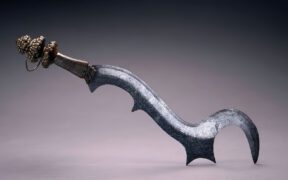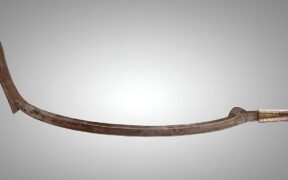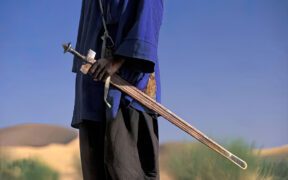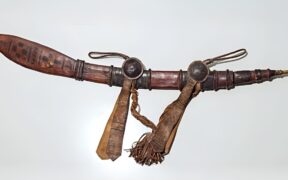Our content features commercial links to our products, committed to transparent, unbiased, and informed editorial recommendations. Learn More
The Konda Sword: Africa’s Most Terrifying Blade and Weapon
NO AI USED This Article has been written and edited by our team with no help of the AI
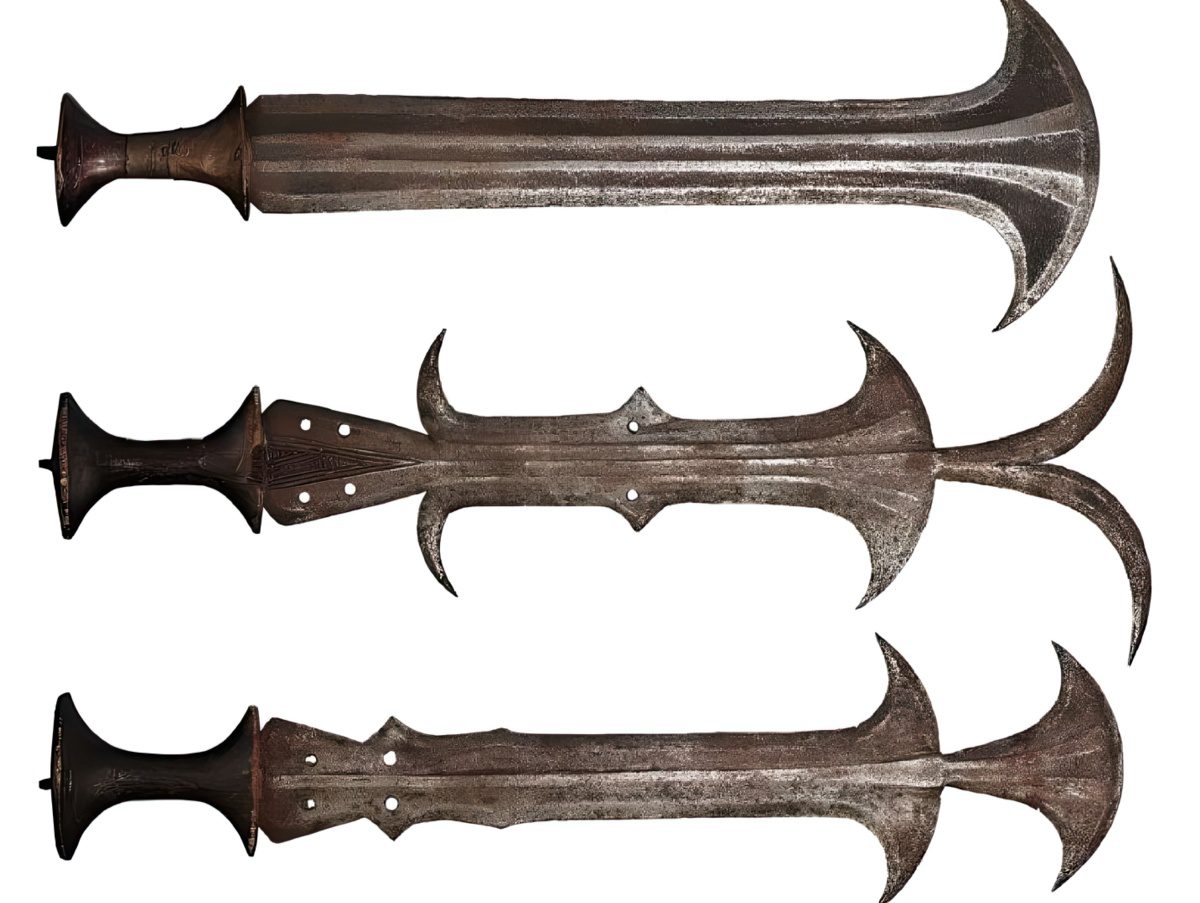
The African Konda sword is one of the most fearsome-looking swords in the world. This terrifying-looking blade was created in the 19th century and is often called the Ikakalaka. It has become a staple of popular culture in the 21st century thanks to its blade design and shape.
Although it may look ceremonial, the Konda could effectively cut, slash, and thrust. In this article, we will go over its unique characteristics and traits. Then we will delve into the Konda’s many uses and combat effectiveness and explain its history.
Characteristics of the Konda Sword
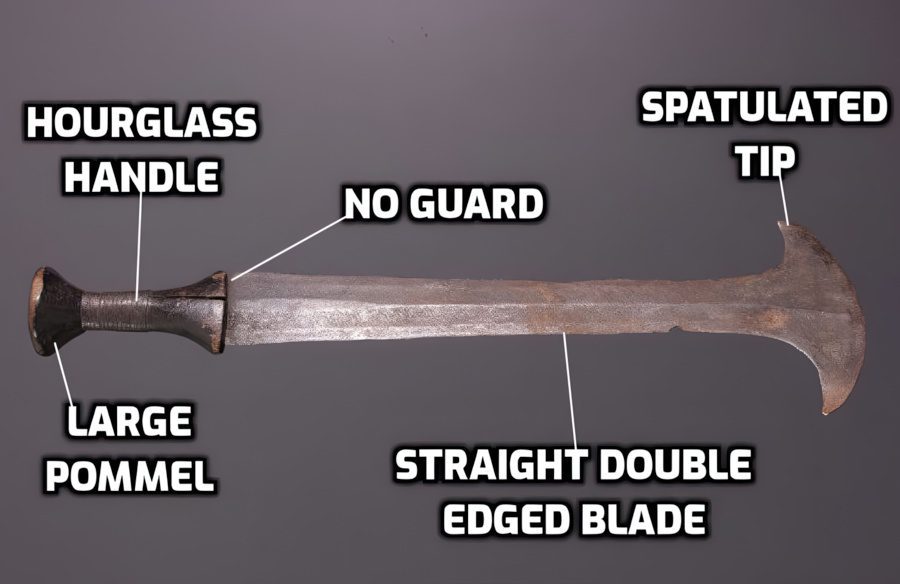
The Konda sword’s design is so unique and striking that it seems as though it came out of a fantasy novel. It has one of the strongest and most unusual characteristics in the world: a straight, double-edged blade that opens up with two distinct edges with an axe-like blade shape at the end. Although it is commonly depicted as a large two-handed sword, the historical Konda is actually quite small in size.
Blade
The Konda or Ikakalaka African sword is made of iron and steel and has a straight, double-edged blade, meaning sharpened on each side. This blade has distal tapering, meaning it gets thinner toward its tip but does not taper into a singular point like the Longsword. Instead, the Konda has a double-edge spatulated tip in the form of a crescent.
The style of this type of sword was fairly common in the African art of swords, designed to distinguish itself and be a prestige sword. Although that is the case, the axe head tip gives the Konda certain advantages in slashing and thrusting.
Guard
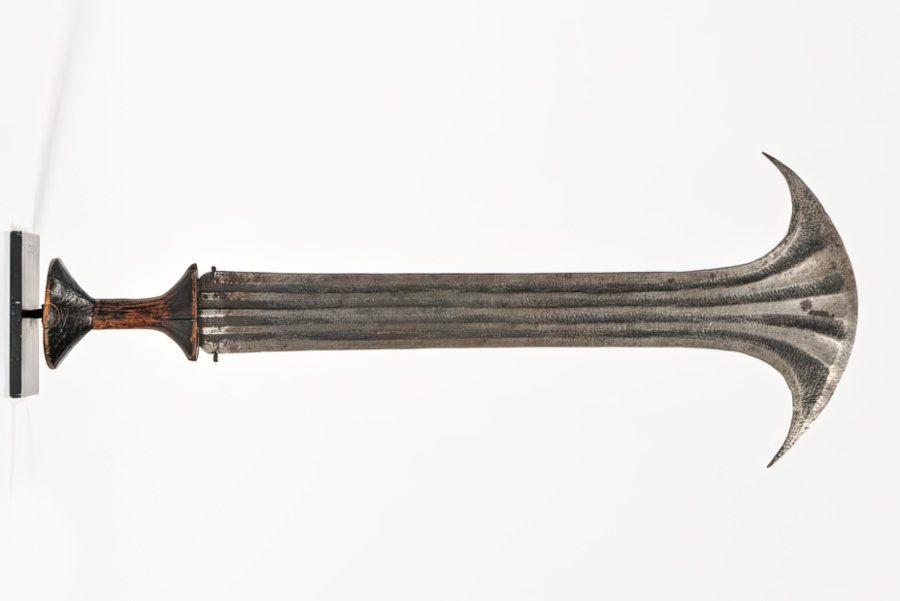
The lack of a guard, the metal component that sits above the handle and protects the user from injury, is a defining feature of the Konda sword. However, the handle’s top separates into two pieces that may serve as a guard but wouldn’t offer much protection implying that the sword was probably used with a shield.
Handle
Konda or Ikakalaka swords are primarily made to be one-handed weapons, which explains the small hourglass-shaped handle. The handle acts as a form of protection for the user’s hand while allowing a firm grip when held.
The most usual handle length is around 4 to 6 inches (10 to 15 cm) and can be made out of ivory or bone and covered with wood.
Pommel
The pommel is the back of the handle that offers back support and weight stability for the entire blade. The Konda can have sizable pommels that are usually round or triangular and sometimes feature certain animal or human shapes.
Scabbard
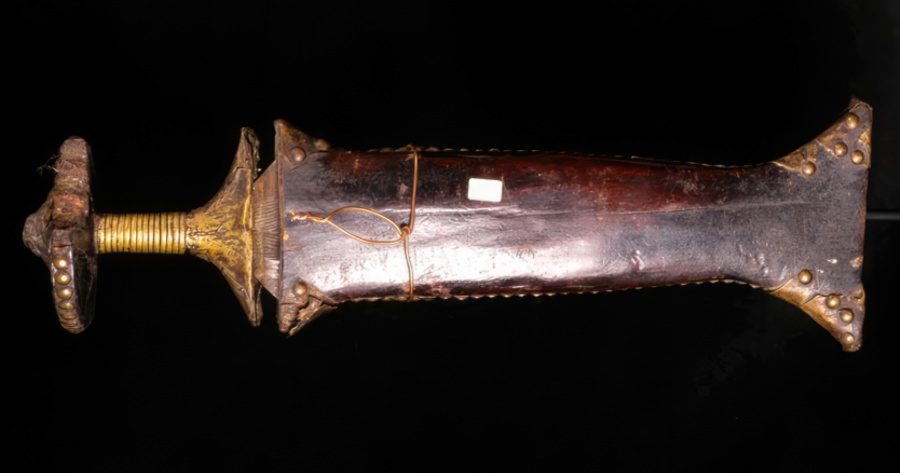
The Konda sword’s scabbard is usually made of leather and wood and lined with brass tacks and wires. They have a very interesting shape with two sets of extensions on both sides of the scabbard.
Weight
The shape of the Konda sword gives the impression that this weapon is large and extremely heavy, a common misconception shown in modern media. The Konda or Ikakalaka is a fairly light blade that averages around 0.9 to 1.7 lbs (400 to 800 grams).
An interesting point about the weight of the Konda is that the center of balance is near the handle and guard, not actually at the spatulated tip, as one might think.
Length & Size
The Konda sword used in African history was not the big weapon one might see in modern media today. The most common length for the Konda or Ikakalaka is between 19 to 30 inches (48 to 76 cm).
Uses for the Konda Sword
Despite the Konda sword looking like a warhammer, its use is similar to a sword, with the exception of the thrusting motions. It is a one-handed sword used primarily for hacking and slashing attacks combined with a shield in the other hand. Though it might look like a weapon of war and destruction, it had many ceremonial and religious roles too.
Ceremonial & Prestigious
Whether Western, Central African, or as far away as the Indonesian islands, swords made with intricate details were one of the best ceremonial and prestigious tools to own. That is why the Konda was one of the most popular emblems of leadership commonly seen on many tribal chiefs throughout the Konda peoples of Congo.
In Congo, even in the early 20th century, a lot of trade was going on without the use of coins or modern currency. A very high item of value that could buy many things was made out of metal, which made the Konda a prized possession used in trade.
Sacrifice & Executions
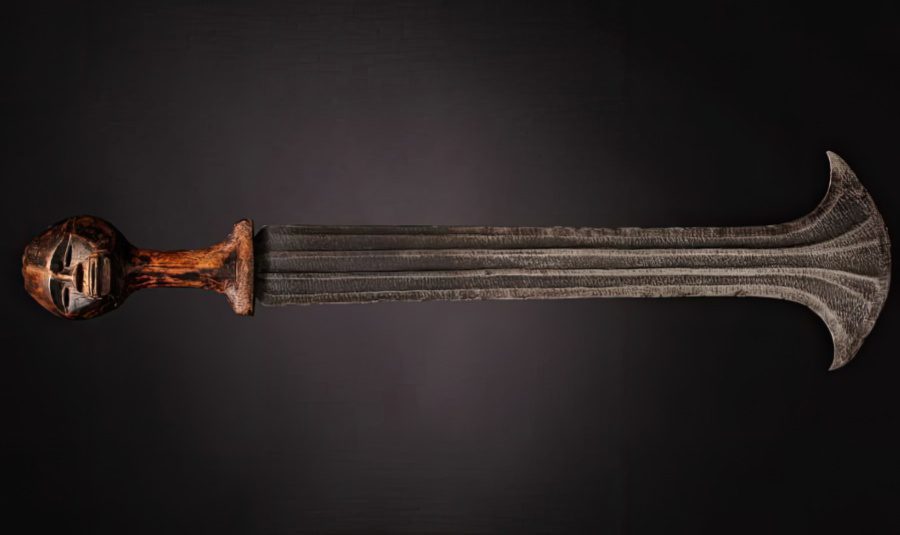
Some highly religious and ceremonial acts that used the Konda sword throughout Africa were sacrificial, and others included bringing a better harvest or hunt. At times they were used as a method of punishment for a criminal or a wrong-doer. Some African swords, like the Ngombe and Konda, were excellent decapitating tools, making them a popular executioner’s sword.
Warfare & Combat
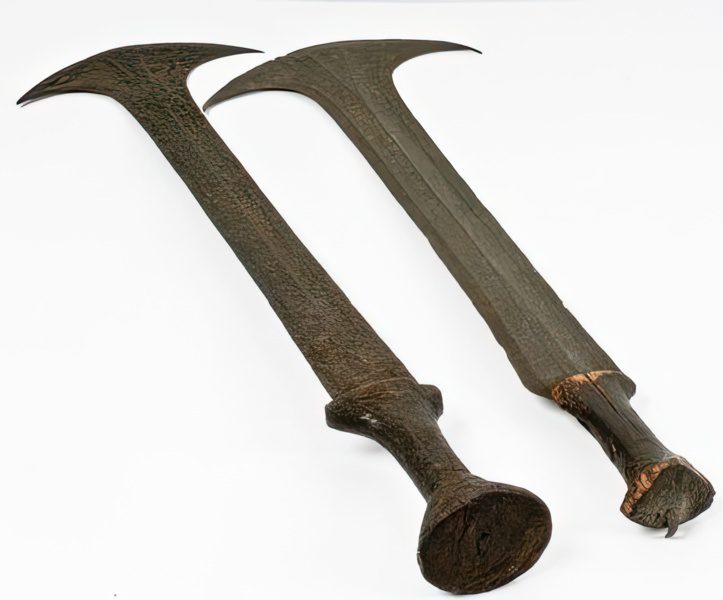
Despite being linked to nobility and high-ranking members of Congo, the Konda was a useful tool in battle. Its double-edge blade was effective for slashing and piercing through flesh. The shape of the blade’s tip also proved useful for hooking through enemy shields like the Falx sword.
Sword or stick fighting was popular in African martial arts, and the Konda’s recurved blade tip was used for piercing through the light armor used in Congo at the time while battling other tribes.
Modern Media
The Konda sword is now among the most well-known blade in popular culture, rivaling the Japanese Katana. The intimidating appearance of this sword has led to it being used by villains in popular media. Some examples include the Transformers and Lord of the Rings franchises and various video games.
History of the Konda Sword
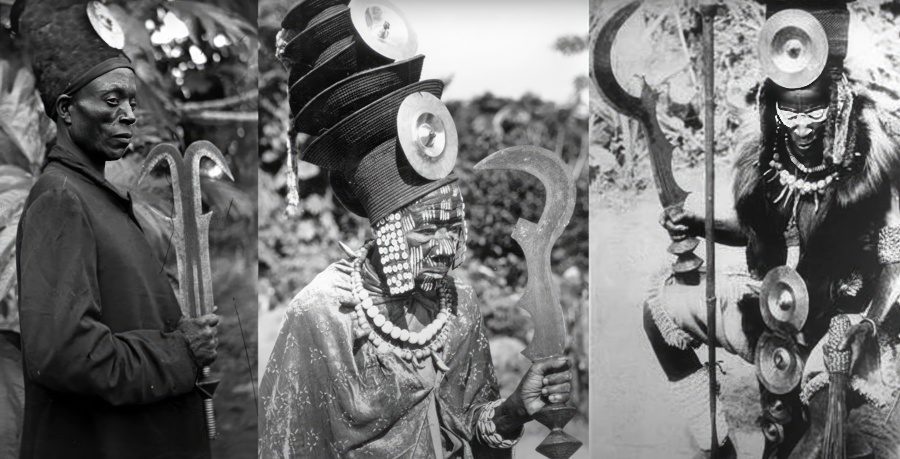
The Konda sword originated in Central Africa or, more precisely, among the Mongo people in the northwestern parts of Congo. The Konda had a history of intricate and eye-provoking metallurgy and costume making, which might have led to the sword’s current design and creation.
The name Konda, which means hunter in their native language, is believed to have been derived from the same Konda people in the tropical jungle of the Democratic Republic of the Congo, which could have constructed the sword.
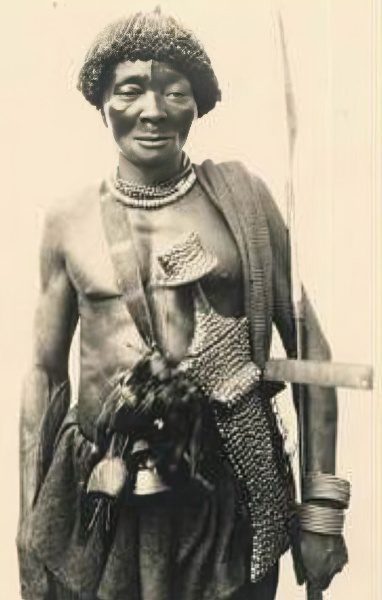
Congo’s pre-colonial era, like the Kingdom of Lunda, saw the employment of various African swords in battle. Some swords and blades used in ceremonial contexts displayed the power of leaders and kings and were used heavily for trading. When colonization began, there was a ban on most edged weapons, and only the highly ceremonial and prestigious weapons were allowed, which led to the popularity of the Konda sword.
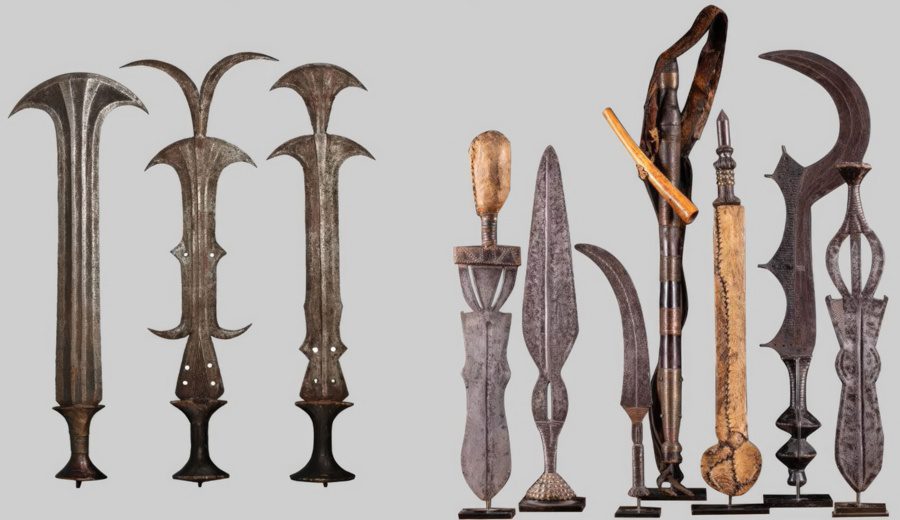
Some Kondas weren’t designed to be weapons at all. Instead, they were a sign of social superiority and were used by both males and females for village celebrations, rituals, sacrifices, and executions. That is why the Konda swords could vary in shape and size. The ability of the blacksmith, the person’s ethnic background, and the weapon’s intended use all affected the final form of the blade.
